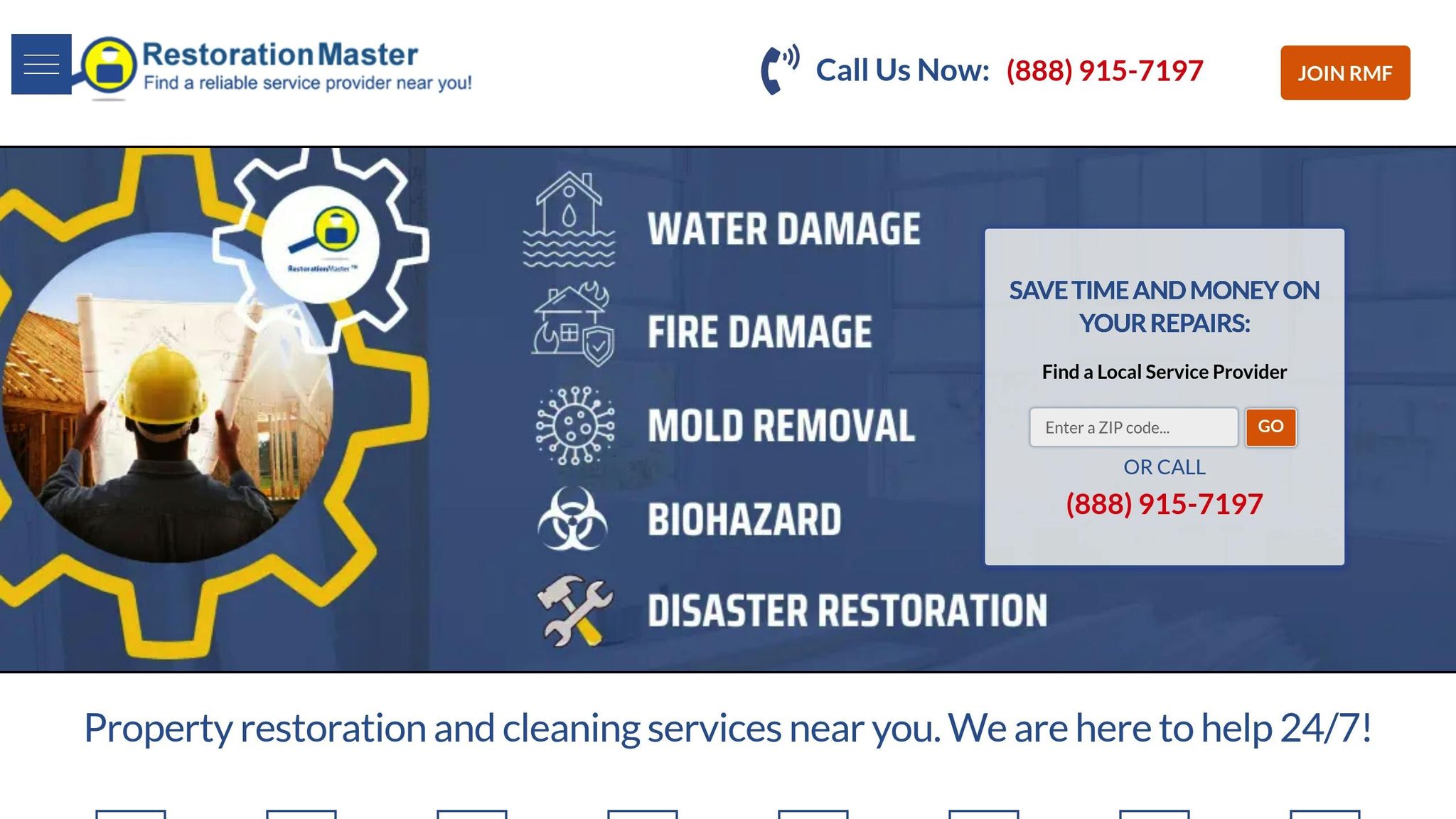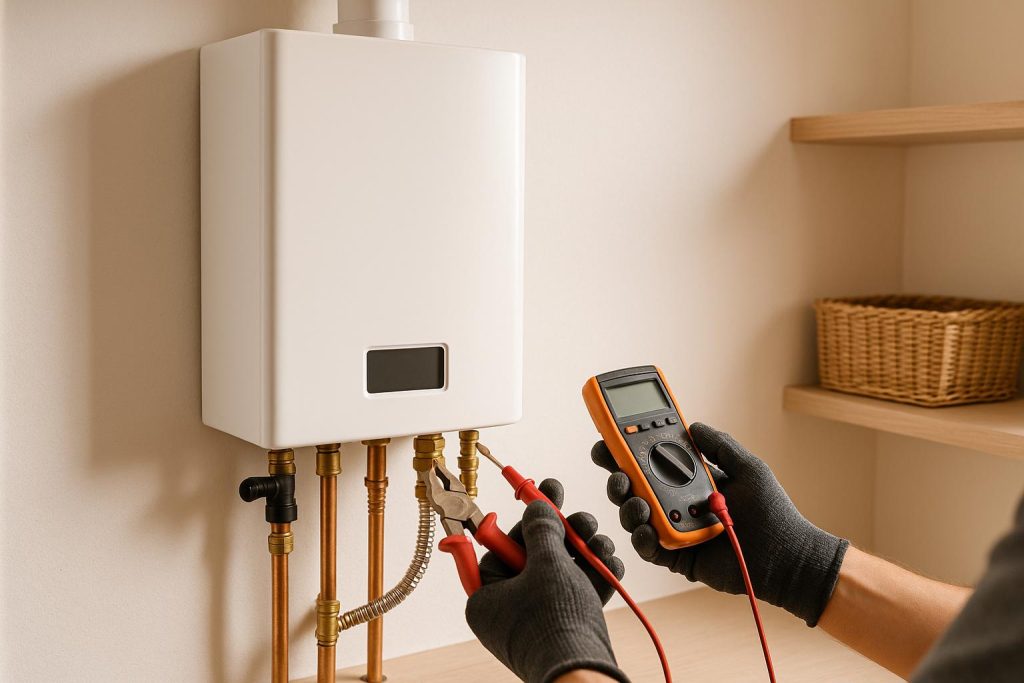A basement sewage backup is one of the worst emergencies a homeowner can face. It’s not only disgusting and stressful, but also poses serious health and safety risks. Raw sewage carries harmful bacteria, viruses, and toxic gases that can spread quickly and damage everything it touches — from floors to furniture to your foundation. The key to minimizing damage and danger is quick, informed action.
In this guide, we’ll cover what causes basement sewer backups, what to do when one happens, how to clean up safely, and the best ways to prevent it from happening again. Whether your home has experienced flooding before or you just want to be prepared, this article walks you through everything step by step.
- Health Risks: Sewage carries dangerous pathogens (e.g., E. coli, Hepatitis A) and toxic gases like methane.
- Early Warning Signs: Look for slow drains, gurgling toilets, sewage odors, or wet spots near floor drains.
- Immediate Steps:
- Evacuate the area and turn off electricity safely.
- Stop water usage and seal off the basement.
- Wear protective gear (gloves, boots, N95 mask) to avoid contact.
- Call a plumber and water damage restoration experts.
- Cleanup Costs: Professional services typically cost $500–$2,000 depending on the severity.
- Prevention Tips:
- Install backwater valves or sump pumps.
- Schedule regular sewer inspections and maintenance.
- Avoid flushing grease or non-flushable items.
- Upgrade old plumbing systems to modern materials.
Preparation is key: Stock emergency supplies like waterproof gloves, disinfectants, and wet/dry vacuums. Prevention saves time, money, and stress.
How to Handle a Sewage Backup in the Basement | RestorationMaster FAQ

What Causes Basement Sewer Backups?
Basement sewer backups usually stem from three main issues, each requiring specific prevention measures. Knowing these causes can help you respond quickly and take steps to avoid future problems.
Main Sewer Line Blockages
When the main sewer line gets blocked, wastewater has nowhere to go but back through basement drains, toilets, and sinks.
Common culprits include tree roots, which often invade older clay or cast iron pipes, and improper disposal of items like grease or non-flushable products. Warning signs can include multiple drains backing up at once, gurgling noises from toilets, slow-draining sinks or tubs, and unpleasant sewage smells.
As the Roto-Rooter Blog explains:
“The sooner you detect a sewer line breakage or clog, the more likely it is you’ll be able to fix it without a huge hassle or cost. Damage tends to worsen over time.”
City Sewer System Overloads
Heavy rainfall can overwhelm municipal sewer systems, especially in older cities where sewage and stormwater share the same pipes. These combined systems often can’t handle the extra water during storms, which forces sewage back into homes. In fact, backups related to storm events have increased by about 30% over the past decade.
DrainWorks Plumbing highlights the issue:
“When there’s heavy rainfall, the city’s sewer system often struggles to keep up. This can cause water to back up into homes.”
To prevent flooding in urban areas, combined sewer overflows are designed to release untreated sewage into nearby waterways when the system exceeds capacity.
Old or Damaged Pipes
Homes built before the 1970s often have aging pipes that are more prone to failure. Clay pipes, for instance, can become brittle and collapse, while cast iron corrodes over time, creating rough surfaces that easily trap debris.
A collapsed pipe can cause an immediate and severe blockage, leading to a rapid backup of sewage. Even gradual corrosion poses risks, as cracks can allow tree roots and debris to infiltrate the system. Homes in areas with shifting soil, freeze-thaw cycles, or seismic activity face additional challenges, as ground movement can further weaken pipe joints and the overall system’s ability to handle wastewater.
What to Do Right Away During a Sewer Backup
Understanding how sewer backups happen is crucial, but knowing what to do when one strikes is even more important. When sewage starts backing up into your basement, acting fast can protect your family and limit property damage.
Stay Safe First
Your safety comes first. Get everyone, including pets, out of the affected area immediately. Turn off electricity to the basement from a safe location outside the house, and don’t go back in until you’re properly equipped. Wear waterproof gloves, an N95 respirator, and waterproof boots to protect yourself from harmful bacteria and viruses in the sewage water. Avoid touching contaminated water with bare skin at all costs.
If there’s standing water near electrical outlets or appliances, stay out of the area – it’s a serious electrocution hazard. To prevent contaminated water from spreading, seal off the basement entrance with plastic sheeting. Once the area is secure, you can focus on limiting the damage.
Stop Further Damage
The next step is to stop additional sewage from entering your home. Turn off all water usage – this includes faucets, appliances, and even the main water line. If there’s standing water, remove it as soon as possible using a wet/dry vacuum (never a regular household vacuum). Dry the area thoroughly with fans and dehumidifiers within 48 hours to prevent mold, which can cause health issues and expensive repairs.
Ventilation is key. Open windows and doors to allow fresh air to circulate and help dry out the space.
Call Professionals
Once the immediate risks are under control, it’s time to call in the experts. Reach out to a 24/7 professional plumber who specializes in sewer backups. Ideally, find someone with sewer line cameras to quickly diagnose the problem. Be ready to provide details about when the backup started, what you’ve observed, and any recent events like heavy rain or plumbing repairs .
Professional plumbers have the tools and expertise to safely identify and address the root cause of the issue. Additionally, contact a water damage restoration company, such as Rainbow Restoration, to handle the contaminated cleanup. These professionals go beyond plumbing fixes to ensure your home is properly cleaned and restored.
If you’re on a septic system, call your septic service provider. If you’re connected to a city sewer, a 24/7 plumber is your best bet.
Cleanup and Repair Process
After the immediate danger is under control, cleanup must begin right away to prevent long-term damage and health risks. A proper restoration process goes beyond just removing water — it requires disinfecting, drying, and rebuilding the affected area.
Assessment and Containment:
Restoration experts will start by inspecting the basement to assess the level of contamination and damage. They’ll determine what can be saved and what must be discarded. Items like drywall, carpet, insulation, and furniture that have absorbed sewage water are considered unsafe and usually need to be removed.
Water Removal:
High-powered pumps and commercial wet/dry vacuums are used to remove standing water. This must be done carefully, as stirring up contaminated water can release airborne pathogens.
Deep Cleaning and Disinfection:
After water is removed, the next step is to remove solid waste and sludge. Then, surfaces are scrubbed with low-suds detergent, rinsed, and disinfected with professional-grade products. For DIY disinfecting, you can use 8 tablespoons of bleach per gallon of water, but never exceed one cup of bleach per gallon for safety.
Drying the Space:
Dehumidifiers, fans, and open windows are used to dry the basement. This step is crucial — mold can begin growing within 24 to 48 hours of moisture exposure. Depending on the extent of the damage, the drying process may take several days or even a week.
Cost Estimates:
Cleanup and restoration services typically cost between $500 and $2,000, depending on the size of the basement and the severity of the contamination. While that might seem expensive, hiring professionals ensures the job is done safely and thoroughly, which reduces the risk of recurring problems or hidden mold growth.
How to Prevent Future Sewer Backups
Once you’ve handled the immediate cleanup and documented the damage, it’s time to focus on prevention. Taking proactive steps now can help you avoid the stress and expense of future sewer backups, which often lead to costly water damage.
Install Protection Devices
Specialized devices can act as your home’s first line of defense against sewer backups. These tools monitor water flow and help protect your property, especially during heavy rain or system overloads.
- Water sensor alarms are an affordable option that sound a loud 85-decibel alert the moment they detect water.
- Cyclone WiFi Sewer Alarms take it a step further by connecting to your home’s WiFi network, sending alerts directly to your phone if a clog is detected.
- Backwater valves are a one-way solution that block sewage from flowing back into your home. Many cities recommend or even require these devices. Installing one during construction costs about $500, while retrofitting an existing home can range from $2,000 to $5,000.
- Sewer flood gate valves provide a heavy-duty option, using a knife-edged gate to completely block water over extended periods. Though more expensive, they are a highly reliable long-term solution.
Regular Maintenance and Inspections
Routine maintenance plays a huge role in preventing sewer backups. Blockages are responsible for about half of sewer overflows in the U.S., with grease accounting for 50% of those blockages and solid debris causing another 25%.
- Schedule sewer line inspections at least every two years, or annually if your plumbing is older. Professionals can use advanced video camera technology to spot potential problems early.
- Invest in hydrojetting services, which use high-pressure water to clear grease and debris, keeping your pipes in top condition.
- Practice smart disposal habits – never pour grease down the drain and avoid flushing items that aren’t toilet paper. These small changes can significantly reduce the risk of clogs.
Upgrading your plumbing with modern components can also strengthen your home’s defenses against future issues.
Update Plumbing Systems
Older plumbing systems are more prone to failures, which can lead to sewer backups. Upgrading key elements not only reduces the risk of problems but can also improve your system’s overall efficiency.
- Replace outdated pipes with modern materials like PEX or copper, which are more durable and reliable. If full replacement is too costly, consider spot repairs or trenchless relining methods, which cost 50–75% less while still offering significant improvements.
- Install a sump pump to prevent basement flooding, especially in areas prone to heavy rain.
- Add smart leak detection systems to your home. These devices, which cost between $200 and $600, can alert you to issues before they become emergencies.
- Upgrade to high-efficiency water fixtures. For example, older toilets use up to 6 gallons per flush, while newer models use as little as 1.28 gallons. Switching can save the average household up to 13,000 gallons of water annually, reducing strain on your sewer system and lowering your water bill.
- Install pipe insulation to prevent freezing, which can lead to burst pipes and sewer issues. At just $1–$3 per foot, this small investment can help you avoid repairs that average $5,000.
Leaks can waste nearly 10,000 gallons of water annually, and the average insurance claim for water damage is about $11,000. By making these upgrades and taking preventive measures, you can protect both your home and your wallet in the long run.
Tools and Resources You Need
Once you’ve put prevention strategies in place, it’s just as important to have the right tools and resources ready for emergencies. Acting quickly when a crisis hits – like a sewage backup in your basement – can mean the difference between a manageable cleanup and a full-blown disaster. Every second counts, and preparation is key to ensuring a safe and effective response.
Emergency Response Tools
Your emergency kit should include essential protective gear. Waterproof gloves, safety goggles, and masks are non-negotiable since sewage contains harmful pathogens that pose serious health risks. Adding waterproof clothing or coveralls to your kit will further protect your skin from contaminated water.
For water removal, a wet/dry vacuum rated specifically for sewage is a must-have. This ensures you can safely extract contaminated water. If your basement doesn’t have a sump pump, a portable one can be a lifesaver for clearing out larger areas of standing water efficiently.
Cleaning supplies are just as critical. Stock up on EPA-certified disinfectants, as regular household cleaners won’t cut it when dealing with sewage pathogens. Equip yourself with scrub brushes, mops, and disposable cleaning cloths to tackle affected surfaces thoroughly.
Another essential tool is a backflow prevention device. These devices not only help during emergencies but also act as long-term safeguards. For example, basic backwater valves like the Internal Backwater Valve 4″ Float Model Flood-Guard ($24.49) or the Tondiamo Backwater Valve ($46.99) are highly rated on Amazon, with customer reviews averaging 4.6 to 4.7 out of 5 stars. These valves are designed to stop wastewater from flowing back into your home from the city sewer system. Options range from low-cost sewer check valves for temporary protection to automatic flood gate valves for hands-free, comprehensive defense. Manual gate valves are also available for specific needs. Pairing these tools with expert advice ensures you’re equipped with both the gear and the know-how to handle emergencies.
Expert Guides and Tutorials
Having the right tools is only half the battle – you also need to know how to use them effectively. That’s where expert resources come in. Platforms like Plumbing Sniper offer detailed guides to help you navigate sewer backup situations with confidence. From spotting early warning signs to understanding the root causes, these resources can save you time, money, and stress.
Their step-by-step instructions cover emergency procedures, maintenance tips, and product recommendations, helping you act decisively when it matters most. These guides also clarify when you can handle repairs yourself and when it’s time to bring in a professional, emphasizing the importance of regular maintenance to prevent future issues.
If you’re unsure about selecting the right tools, product recommendation guides are invaluable. They help you choose the best backwater valves, wet/dry vacuums, or sump pumps based on your specific needs. Additionally, prevention strategy guides teach you how to spot potential warning signs, implement preventative measures, and develop a comprehensive plan to avoid future sewer backups.
Conclusion: Key Points to Remember
Basement sewer backups require quick, informed action to safeguard both your health and your home.
Take immediate steps: Evacuate everyone, including pets, steer clear of the sewage, turn off electrical power safely, stop all water usage, and contact professionals as soon as possible .
Leave cleanup to the experts. Attempting to handle sewage cleanup yourself can expose you to serious health risks. Sewage is classified as Category 3 “black water”, filled with harmful pathogens. Professionals use industrial-grade tools to manage cleanup efficiently, usually completing the process within 1–3 days to prevent mold growth .
Prevention is smarter than repair. Simple preventative measures can save you thousands of dollars by reducing the chances of future backups. Dispose of grease properly, avoid flushing paper products, install backwater prevention valves, and regularly maintain your sewer lateral – the pipeline connecting your home to the city sewer system. These small steps can make a big difference . Additionally, having the right tools and a clear plan ensures you’re ready to act swiftly during an emergency.
Preparation makes all the difference. Stock up on essential emergency supplies, including personal protective gear, so you’re better equipped to handle a backup. Reliable resources like Plumbing Sniper provide detailed, step-by-step guides for emergency situations, helping you decide whether to tackle repairs yourself or call in the pros.
FAQs
How can I prevent a basement sewer backup from happening?
Preventing a basement sewer backup involves a mix of regular upkeep and smart planning. One of the best measures is installing a backwater valve, which helps stop sewage from reversing into your home during heavy rainfall or when the system is overwhelmed. Regular inspections and cleanings of your sewer lines are also essential to catch clogs or damage early before they turn into major issues.
Pay attention to what goes down your drains – things like grease, wipes, and other non-degradable items can easily create blockages. For extra peace of mind, you might also want to install a sump pump or a backflow prevention system to handle excess water and keep flooding at bay. These proactive steps can save you a lot of hassle, money, and stress over time.
How can I safely check the severity of a basement sewer backup before help arrives?
To assess a sewer backup in your basement safely, the first step is to turn off your home’s water supply. This helps prevent additional flooding. Make sure to wear protective gear like gloves, boots, and a mask to shield yourself from potentially harmful sewage. Then, carefully examine the area to gauge the amount of water or sewage present.
If you notice standing water or black water (waste-contaminated sewage), steer clear of the area and call a professional right away. For smaller backups, ensure the space is well-ventilated and avoid using any plumbing fixtures until the problem is fixed. Always prioritize safety and rely on professionals for severe or risky cleanups.
What are the warning signs that my home’s plumbing system might be at risk for a sewer backup?
If your plumbing system is acting up, there are a few warning signs that might point to a potential sewer backup. Watch out for foul smells wafting from drains, gurgling sounds in your pipes or toilets, water draining slowly in sinks or tubs, or even water backing up into fixtures like bathtubs or toilets. Another major clue? If multiple fixtures start having problems all at once, it’s likely a sign of a bigger issue.
Catching these problems early can save you from expensive repairs down the road. Routine maintenance and inspections are key to keeping your plumbing running smoothly and avoiding those unexpected – and often messy – emergencies.






